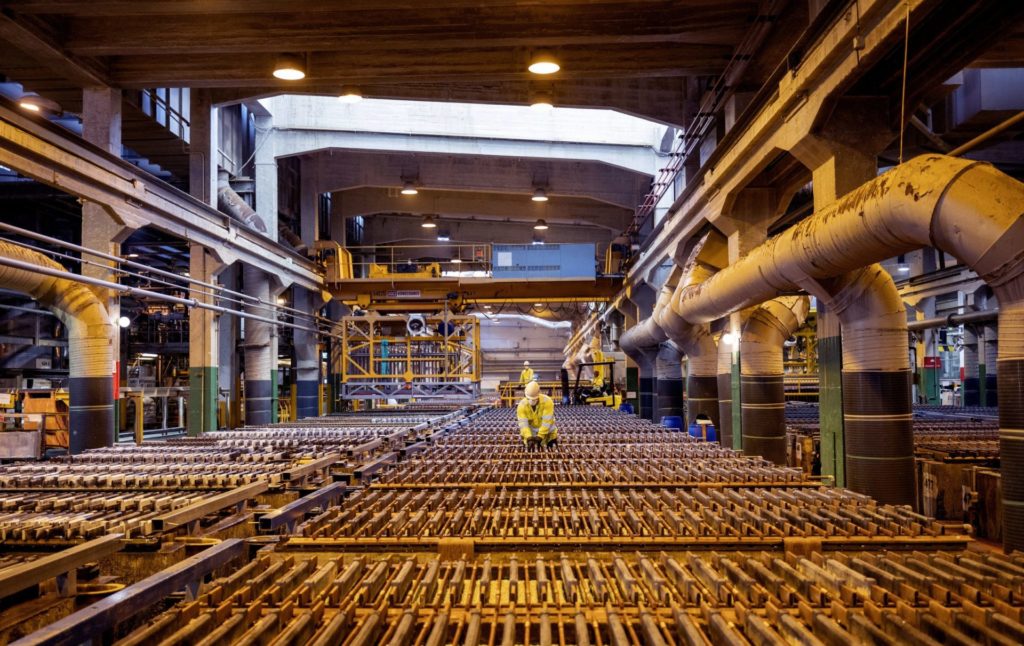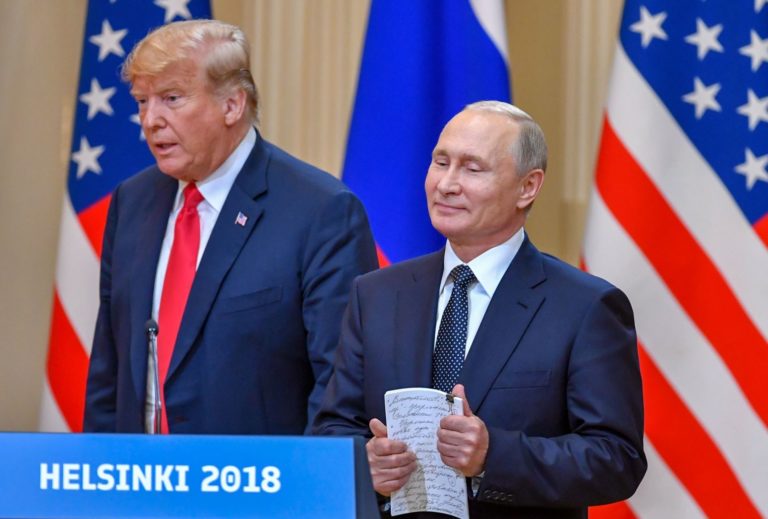The hydropower nation Norway is exposed to a pincer maneuver from three sides: Liberals, the power industry, and climate activists.

Photo Tor Erik Schrøder
It is still the case that a new cable over time gives an increase of a few øre, as we have said ever since we applied for a license. The effect will vary, sometimes our cables will give a lower price on import, other times a larger increase in price. The big increase we see this autumn is not due to a new cable to Germany or England, it would have happened anyway because we are part of a European power system where many factors have simultaneously sent the price upwards “Gilje writes in an e-mail.
Christer Gilje, communications manager at Statnett, believes they have their words intact in mail to Klassekampen

OPINION
by Thomas Vermes, Political commentator. Specialist in the environment, EU, EEA, and WTO Original first published in Norwegian at ABC/News
When the author Naomi Klein published the book The Shock Doctrine: The Rise of Disaster Capitalism in 2007, she wanted to show how liberal forces use major crises, such as violence or natural disasters, to throw society upside down.
Norway is now in the middle of a “Naomi Klein moment”.
Not in the form of violence or natural disaster, but a violent electricity price shock as a result of a liberalized power market. Norwegian politicians have made sure to build up such a large capacity on the foreign cables that there will be a foreign price level for electricity here at home.
In the discussions raging about the electricity market, the liberals and the power industry have gained allies among climate activists who want to channel Norwegian power to Europe. Their idea is to reduce climate emissions in Europe through the free flow of Norwegian power.
Together, they can change the country into something completely different than, for example, The Federation of Norwegian Industries and the “Industriaksjonen envision, a thoroughly electrified society with large, green industrial production. Which is actually a vision also in the government platform.
From power nation to power exporter
In fact, the item “housing, lighting, fuel” on Statistics Norway’s statistics for inflation (consumer price index) in October rose by as much as 12.1 percent in one year. November numbers are getting worse. And who knows how it goes over the winter.
This spring’s tariff settlement is eaten up for the employees. The value of the pension is shrinking. And people with limited economic resources, like Anita Bjørnevig Knutsen on NRK Debatten on Tuesday, must keep the temperature in the children’s room at 13 degrees.
Now kind people show up with support for her. Charity in response to the free flow of power and power prices through the EEA agreement.
If not even the electricity prices we are experiencing now trigger intervention in the liberalized power market, it will all continue. Then the country changes from a power nation to a power exporter.
By “power nation” I mean not only a country with large power production, but also that power is used for reasonable access to electricity for the inhabitants and a competitive advantage for business, not least power-intensive industry.
Instead of selling large amounts of power, without using it to build value chains domestically.
When the worst has happened and electricity prices fall for a period, the vision of using cheap, regulated, and pure Norwegian power to build green value chains here can be lost anyway.
This might explain the reason why the giants Equinor, Hydro, and Panasonic on November 29. declared that after a comprehensive assessment, they are shelving their plans to establish a power-intensive battery factory in Norway.
Hydro states to Dagens Næringsliv that problems with customs duties for electric cars with Norwegian batteries from the EU to the UK are one of several arguments for stopping the project. One can only guess that expected electricity prices are not without significance for their assessments.
Hydro also owns the Røldal-Suldal power plants together with Lyse kraft. The latter is among the initiators of another foreign cable, Northconnect to the UK, which is currently on hold.
The dream of green industrial prosperity
If Norway increased power production by, say, 110 TWh from today’s approx. 140 a year, it would mean dramatic interventions in Norwegian nature, but hardly a large fall in prices in the markets Norway is connected to.
The EU’s production of power was 2904TWh in 2019. The United Kingdom produced 356 TWh in 2016. A growth of 110TWh makes up a poor 2.3 percent of the total market in Norway, the EU, and the United Kingdom. It will hardly trigger tremors in price levels.
Nevertheless, The Federation of Norwegian Industries presented its “Climate march order” to the government on November 23., where they imagine that there will be a green industrial boom if Norwegian production is stepped up from 140 to 250 TWh a year.
How will this NHO organization secure a long-term price level for the raw material that is electric power, which will continue to give us a competitive advantage – at the same time as the power companies can just as easily sell at the new, European price level?
Now or never
If the power industry, the liberals, and the climate activists manage to ride out this storm, the Center Party’s, SV’s, Rødt, and others’ desire to regulate the power market will be buried in the foreseeable future.
Because when we have seen the number 5 NOK for the price of 1 kWh of electricity at home, and the public opinion that is triggered is not strong enough to get the politicians to take action now, we have been thoroughly stunned.
Then we have become accustomed to the fact that fairy tale prices for electricity have become the new normal.
Then the protests will not be as strong the next time we have to buy electricity at a British price, here where hydropower is produced for 10 øre (0,10 NOK) per kWh. And where the taxpayers in their time paid the investments in the power plants.
In other words, it is now time for the liberalized international market for Norwegian power to bear or break.
Violation of the Energy Act?
I also do not understand anything other than that what we are now experiencing is a violation of the Energy Act’s purpose clause, something the Minister of Petroleum and Energy Marte Mjøs Persen (Labor Party) is calmly watching.
The law states:
“The law shall ensure that the production, transformation, transfer, sale, distribution, and use of energy
take place in a socially rational manner, including taking into account public and private interests
that are affected.” (my emphasis)
Yes, Minister, do you think the power turnover at the moment takes place in a socially rational way that takes into account us who are affected?
Also for the climate fight, electricity prices can be a burden.
I can well imagine that the power industry does not like the price level we have received. They, too, see that the sudden onslaught, instead of a more steady rise in European prices, can trigger unrest that could lead to market intervention. Also for the climate fight, electricity prices, which are not the least due to CO2 costs in Europe, can be a burden. Should we freeze up in the north in the hope of saving the continent from coal power?
“Without measures, such conditions will certainly lead to a political uprising,” writes editor Anders Bjartnes in a wise post on the website energyandclimate.
His agenda is that the electricity prices the population will be inflicted on this winter undermine the legitimacy of an energy and climate policy which, among other things, involves the exchange of power with foreign countries.
Ideally, it sounds good that Norway can send surplus power to Germany, Great Britain, and other countries that focus on climate-friendly power such as sun and wind when the sun is hidden behind a cloud and there is what germans refer to as Dunkelflaute (wind still).
Bjartnes however clearly sees that this climate reasoning can be hated if it means that power prices in Norway will be as wild as now.
The surplus country that creates poverty
Therefore, he proposes that the government should pay thousands of kroner to each of us in the months we experience terrible electricity prices. The cut of 10 øre (0,10 NOK) in electricity tax that Vedum and Støre introduce, will hardly be noticeable when a family has to pay up to 10,000 NOK a month, the editor points out.
In the Storting, one party after another has followed up with various proposals for cash payments to the citizens.
Many of them have been involved in creating the monster: A power market were Norway with a surplus of power produced almost for free, triggers a social crisis as a result of electricity prices.
“In the short term, it is not much the government can do with the fundamental conditions that determine what we pay for electricity,” states Bjartnes. Within the EEA agreement’s energy legislation, I do not think there is much that can be done for an EU-loyal government in the long term either.
Are the people becoming comfortably numb – or?
If the idea from Anders Bjartnes or the parliamentary parties is implemented by Minister of Finance Trygve Slagsvold Vedum (Sp), who seems to think 10 øre (0,10 NOK) per kWh is fine against an electricity price of 5 NOK, it could have a side effect:
It saves today’s liberalized power system.
A few thousand NOK can alleviate the rage. And in the next round, we would be comfortably numb the next time the power companies get to raise their prices to insane levels without mitigating measures for the population.
Otherwise, there is nothing to suggest that a Labor-led government will do anything fundamental with the free, European flow of Norwegian power. Just look at what the Labor Party’s Minister of Petroleum and Energy Marte Mjøs Persen answered when Rødt’s Sofie Marhaug challenged her in the Storting’s questioning on October 27.:
“Restricting trade over foreign connections in an attempt to influence the price of power will mean a breach of practice both in Norway and in our neighboring countries, and it will also be in conflict with our international obligations. Cross-border trade of power is regulated, among other things, by the EEA agreement, which is intended to facilitate the freest trade in power possible, without obstacles between the countries.”
The shock doctrine works. In the Storting, the defense of power liberalism and the EEA agreement takes precedence over the people’s and industry’s interest in Norwegian power at Norwegian prices.
If the rage does not get too strong, then.
Thomas Vermes writes in ABC News on Sundays. Read more of his comments here.




35 Comments
Pingback: Norwegian export cables have caused price contagion from the continent, eliminating the Nation's foremost Competitive Advantage - Bergensia
Pingback: Residual income opportunities
Pingback: p365 sig
Pingback: best weed delivery service toronto
Pingback: Buy mushroom Oregon
Pingback: Motvind Norge reports the management and owners of the Storheia and Roan wind power plants in Fosen - Bergensia
Pingback: kode alam
Pingback: camlock coupling
Pingback: สูตรหวยไทย สูตรหวยลาว สูตรหวยฮานอย แม่นๆ ใช้ได้จริง
Pingback: https://ccaps.net/
Pingback: click to investigate
Pingback: Medicijnen bestellen zonder recept bij Benu apotheek vervanger gevestigd in Utrecht
Pingback: สั่งดอกไม้ออนไลน์
Pingback: Best universities in Africa
Pingback: faceless niches
Pingback: ปริ้นสติ๊กเกอร์
Pingback: THE QLUB
Pingback: แทงมวย LSM99
Pingback: บ้านเดี่ยวเมืองเลย
Pingback: shower room bangkok
Pingback: Buy YHM RESONATOR K Online
Pingback: ธุรกิจงานศพ
Pingback: รับทำ SEO
Pingback: รถรับส่งสนามบินในญี่ปุ่น
Pingback: Dee88 เว็บหวยออนไลน์
Pingback: thailand tattoo
Pingback: link
Pingback: cat888
Pingback: Nonameauto
Pingback: betflix wallet
Pingback: โคมไฟ
Pingback: pgslot168
Pingback: ยาระบายมะขามแขก
Pingback: สล็อตเกาหลี
Pingback: 77UP